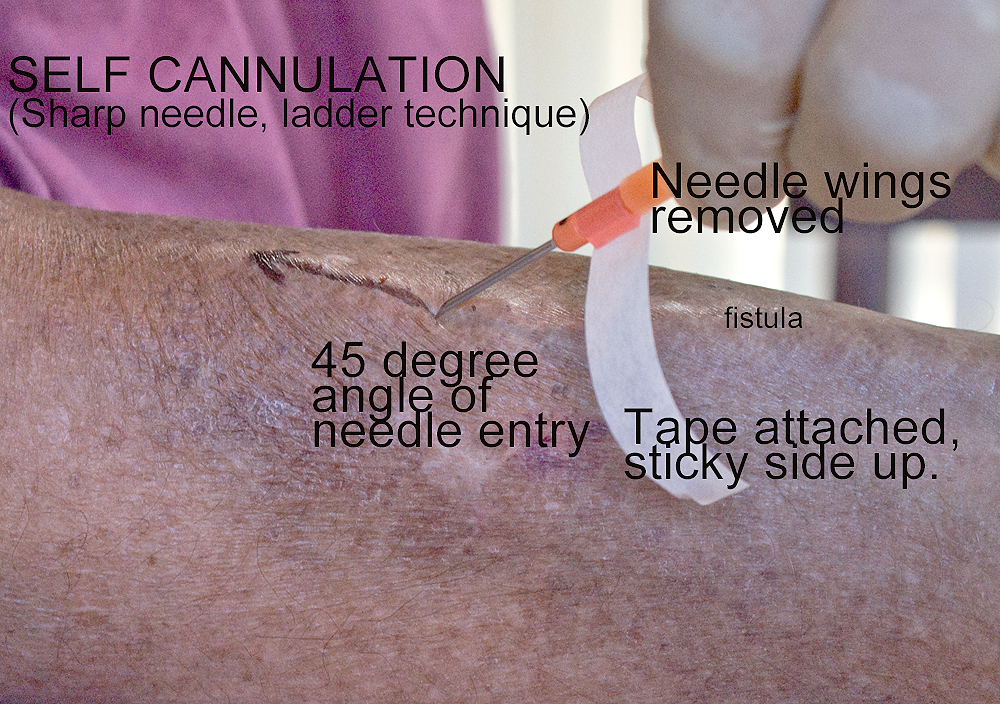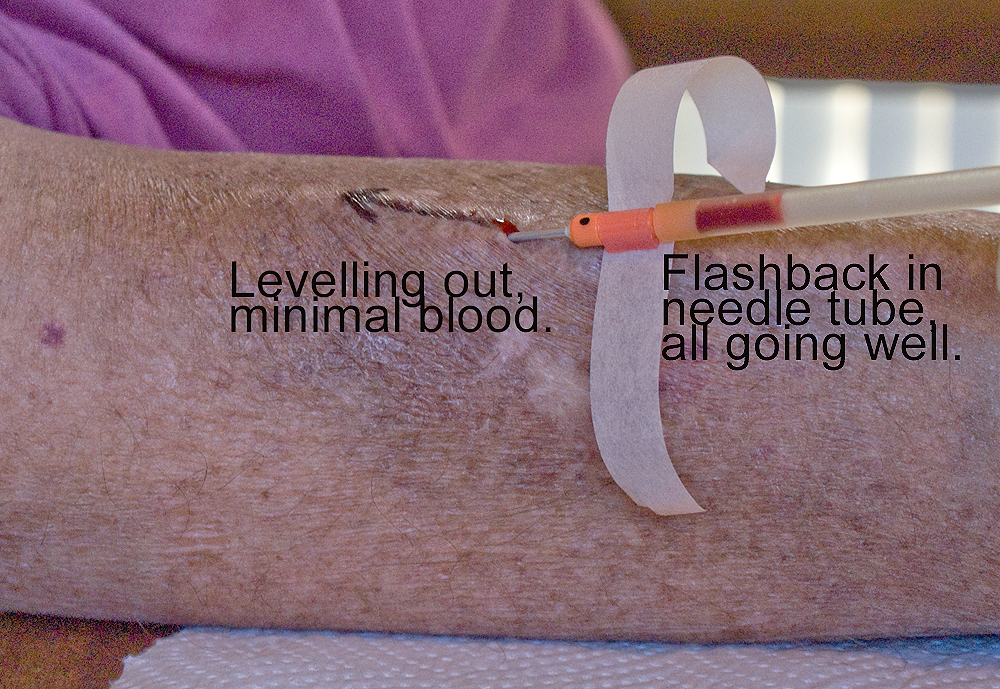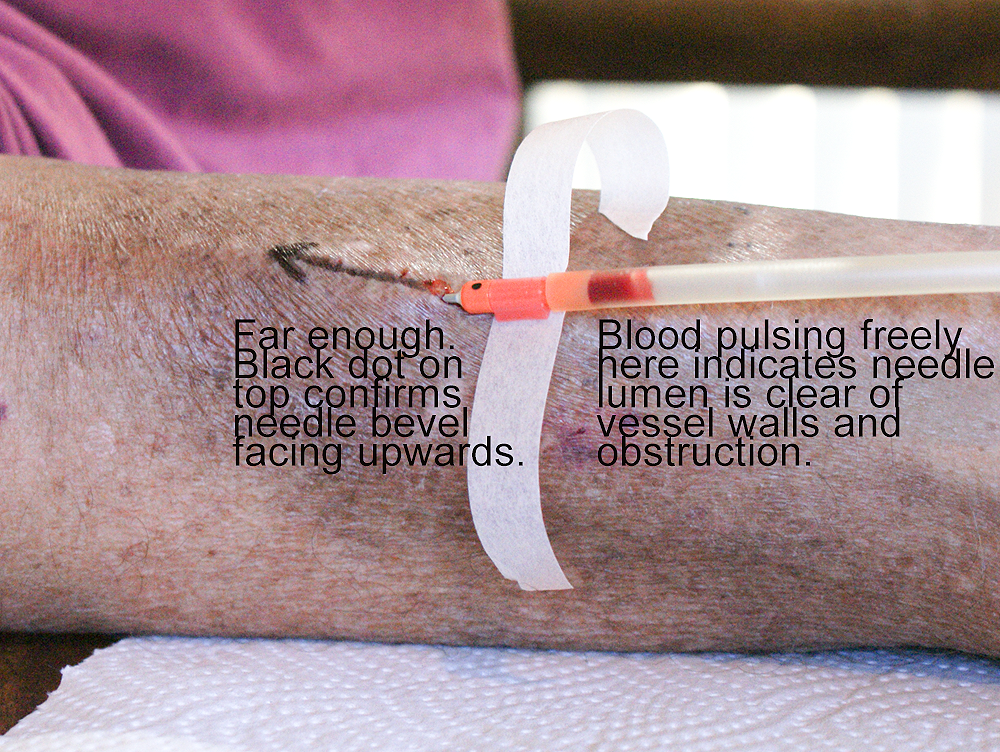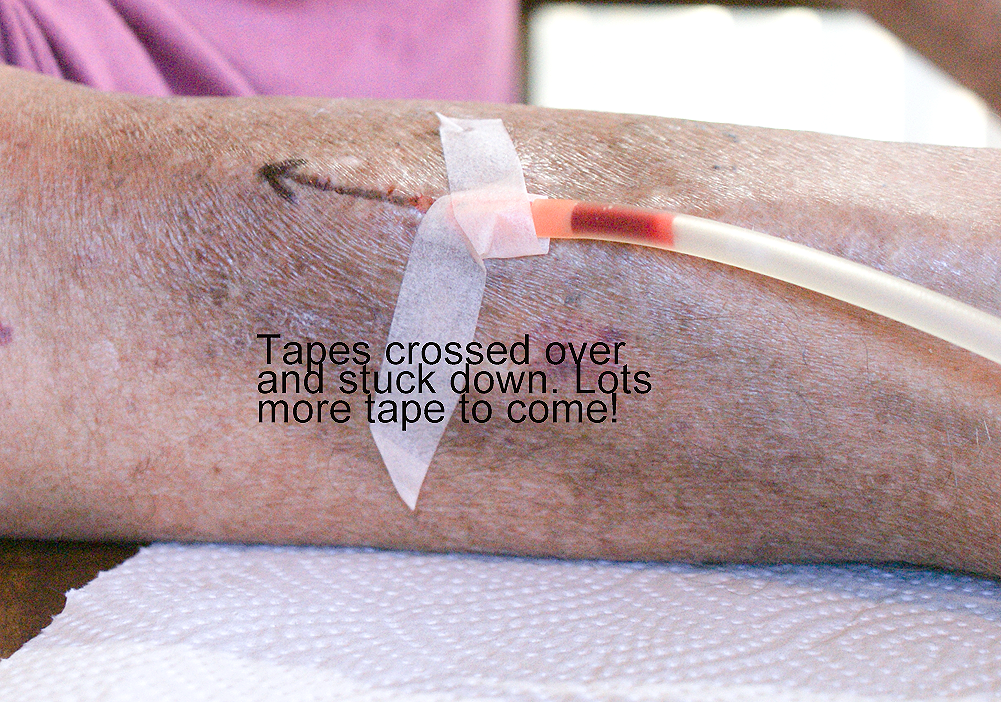A Further Guide to Self-cannulation with the Rope Ladder technique: Single-handed Needling

Those who cannulate alone (and therefore with one hand!) gain valuable tips here and at the Home Dialysis Central FaceBook page, empowering adaptations that suit personal temperament and aptitude. Whilst the running of a dialysis machine follows impersonal prescription the insertion of needles is an area where individual skill and method evolve. This tends to keep one focused and interested in one’s own dialysis as there’s no limit to the refinement and skill that can be developed.
My previous blogs on cannulation dealt with needle spacing, direction and angle of entry, and preserving the life of the fistula by site rotation.
In this one we revisit angle of entry, and also touch on taping, method of insertion, and gauge of needle.
There is always the temptation to enter the needle at too shallow an angle. 25-40 degrees is indicated by Fresenius, John Agar recommends 45 degrees. Initially I tended to insert the needle at too shallow an angle resulting in copious blood squirts. 45 degrees, though scary in terms of the groundless fear of shoving the thing right through to the other side, results in a swift, clean penetration, with little to no blood loss.


Fiddling one-handed with sticking tape and attempting to efficiently apply the widely approved “chevron fold” after the needles are seated is frustrating. It is better to place the tapes on the needles before setting up. The needle wings may be readily detached with a simple twist, leaving space for the tape to be affixed underneath, sticky side up.


With the ever-increasing popularity of long, frequent, slow, low volume dialysis, there is opportunity to reduce stress on the fistula by using a 17G needle as recommended by Fresenius for pump speeds 250 ml/min and below. Given a nicely located needle—away from the vessel endothelium (inner walls)—pressures well under -200 (arterial) and 200 (venous) are attainable. Consider: three to four dialysis sessions per week results in well over 300 needle penetrations of the vessel per annum. A thinner needle will be kinder in the long run, and for those starting out on dialysis, less intimidating.


Comments
John Agar
Oct 19, 2017 10:41 PM
Every phrase in this post screams ‘good dialysis’ ... ‘low flow (read volume) dialysis’ .. ‘17 gauge needles’, the finer gauge being predicated on ‘low pump speeds of 250 or less’ .. ‘low AP and VP values’ .. ‘greater frequency dialysis’ .. ‘a steeper angle of entry’ .. ‘pre-positioned primary tapes’ .. and, especially, the use of ‘long, frequent, and slow’ .. even your subliminal message in the final sentence where you use the phrase (possibly unwittingly) ‘in the long run’ .. this is a post from a thoughtful dialysis user, steeped in experience and superbly trained.
Well said. My congratulations, too, to your home support team for grounding you so well from the start. All users of home HD should read this.
charlotte A Bohner
Oct 19, 2017 10:39 PM
Ant
Oct 20, 2017 3:46 AM
John Agar
Oct 20, 2017 1:00 AM
Any comments, Ant?